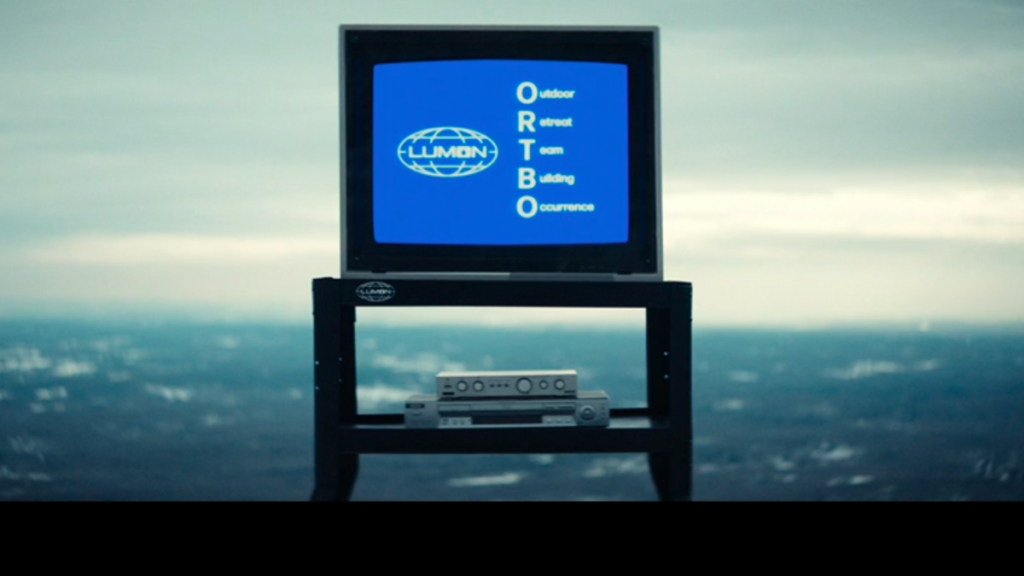Are you talking like Lumon? The danger of cold, corporate B2B content

Like everyone else, I’ve been glued to Season 2 of Severance for the last ten weeks.
One of the biggest joys of the show is its relentless parody of corporate culture. Lumon, the fictional big-bad corporation in the show, has its own heightened, bizarre language, but so much of it is rooted in how companies often speak. This impersonal approach happens when a brand loses its human side and defaults to corporate jargon.
In B2B content, we see this all the time: brands lean on stiff, jargon-heavy language, as if forgetting there’s a person on the other side of the screen. The result? Content that feels lifeless, disconnected and forgettable. Here are some key considerations and Lumon-esque pitfalls to avoid when producing B2B content.
Disconnected language
In Severance, the language feels hollow, eerie and comically exaggerated. It’s meant to unsettle you and make you laugh in equal measure. But sterile language isn’t limited to dystopian drama.
Brands can get stuck in their own version of this. Jargon is often used to sound impressive, but it can feel devoid of emotion and personal context. And vague, overused terminology can lack meaning. Does talking about an ‘end-to-end solution’ really give your audience the information they need, or could you give a real, relatable example? Could you talk about a ‘major change’ rather than a ‘paradigm shift’? Are you guilty of using a bunch of acronyms to make something sound important?

I’m not talking about the occasional use of common industry terms (otherwise, my use of B2B in this piece would be a bit hypocritical!). But it’s a fine line between using industry language to communicate and letting it take over.
If the above rings true, it might be worth stepping back and reconsidering whether anyone actually speaks like that. When every brand sounds like it’s reading off a corporate script, nobody stands out and nobody connects.
Your audience is human – talk to them like humans
Every decision-maker is a person. They worry. They care about doing a good job. They roll their eyes at buzzwords.
Recent Gartner research found that B2B buyers experience a wide range of emotions throughout the buying process, from excitement and optimism to disappointment and frustration. Tapping into that emotion and prioritising storytelling can help you connect with your audience. The brands that win are the ones that are approachable, clear and human. A little playfulness, creativity and personality go a long way too.
According to Paul Cash and James Trezona in their 2021 book Humanizing B2B: “People don’t want to buy from you, they want to buy into you; they want to know what your company stands for, why it exists and what kind of people are behind it. They want to see its human face.”
Your approach to content can make or break your reputation
While we are firm believers in the power of great content at Raconteur, bad content can do more harm than good.
Lumon’s coldness breeds suspicion – just like jargon-heavy, opaque content can make audiences feel you don’t understand their needs, or worse, make them stop trusting you.
According to Edelman and LinkedIn’s 2024 B2B Thought Leadership Impact Report, more than half of C-suite executives have lost respect and admiration for an organisation due to poor-quality thought leadership content.
Conversely, 7-in-10 decision-makers say they are very likely to think more positively about organisations that consistently produce high-quality thought leadership. And 70% of decision-makers say that a piece of thought leadership from another company had at least occasionally led them to question whether they should continue working with an existing supplier (I bet that the supplier was guilty of some of the aforementioned sins).
The bottom line (or, in non-corporate speak, ‘In summary’)
Severance is about the consequences of separating personal identity from work. In B2B content, the same warning applies: brands that hide behind jargon and lifeless messaging risk severing themselves from the very audience they’re trying to reach. The brands that stand out? They sound like people. They tell stories. They’re clear, honest and sometimes even playful. Because at the end of the day, business is still personal.
